
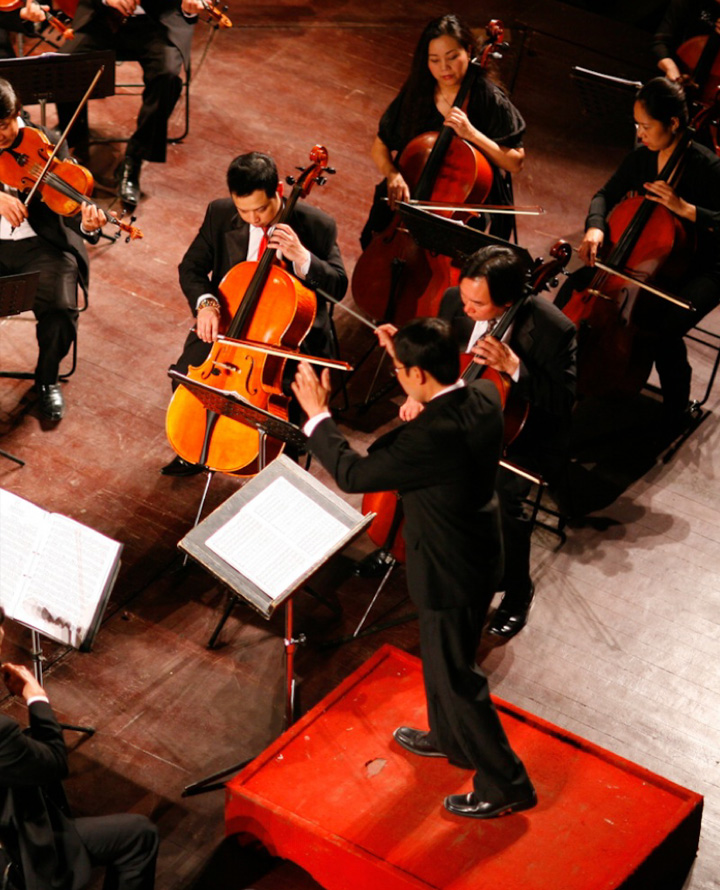

ATMOSPHERE
CLASSICAL, EUROPEANCAPACITY
110 GUESTS SIT DOWN / 500 PERFORMANCEWET WEATHER BACK UP
INTERIOR VENUERESTRICTIONS
POP ENTERTAINMENT NOT ALLOWED
The magnificent 900-seat Municipal Theatre was built in 1911 and is a jewel of French colonial architecture.
Originally modeled as a smaller version of the Great Paris Opera House, it was from the balcony of this wonderfully restored French colonial building that the Viet Minh-run committee of citizens announced that it had taken over the city on 16 August 1945. Today the venue plays host to a variety of international acts from ballet, jazz to symphony performances and even local plays and dramas. Arguably Vietnam’s most prestigious and elegant venue, the Hanoi Grand Opera House is the piece de resistance for any Vietnam incentive program.
On arrival, guests enter the Opera House and the Grand Lobby in the light of candelabrum to enjoy pre-dinner cocktails. Then it’s time for the performance. Enter the audience hall to enjoy an exclusive viewing of the Hanoi Symphony Orchestra. Following the performance, guests will be led through the elegant marble staircase to the Hall of Mirrors and the royal candlelit dining tables for a magnificent fine dining extravaganza of French cuisine.
NOTE : The Hanoi Opera House is due to undergo a full renovation in 2024 and therefore will be unable to be booked until completion.
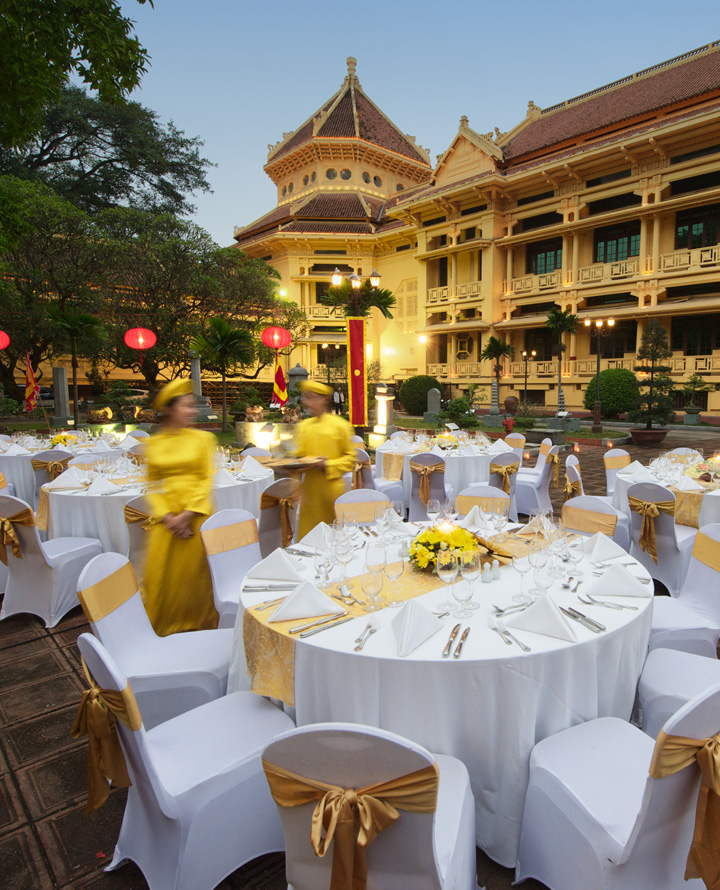

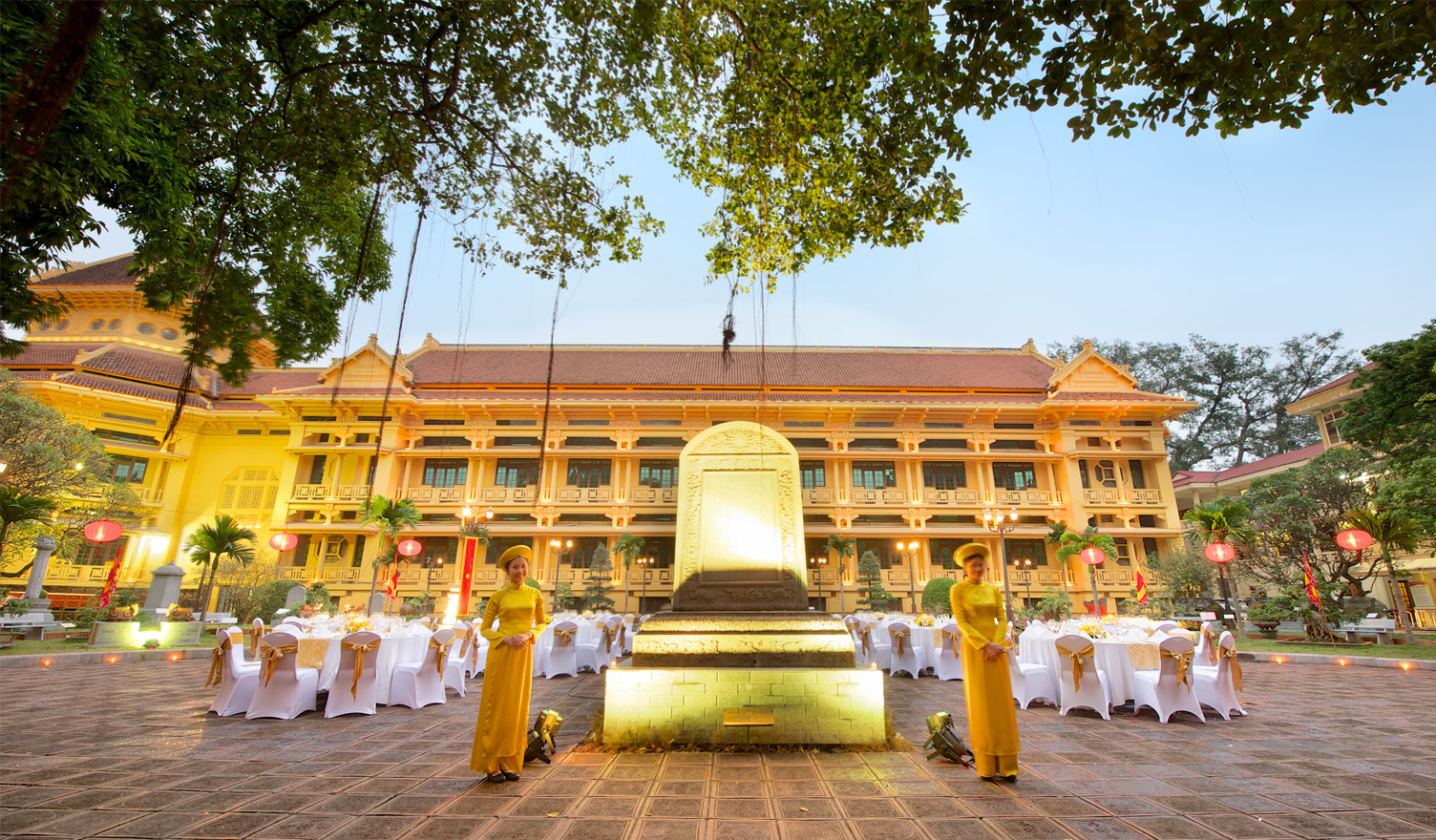
ATMOSPHERE
VIETNAMESE CULTURAL, FRENCH COLONIALCAPACITY
220 GUESTSWET WEATHER BACK UP
MARQUEE SET UPRESTRICTIONS
GOVERNMENT OWNED
Located among rich tropical vegetation lies one of Hanoi’s architectural gems, the distinctly blended influences of both the French and the Vietnamese at the Hanoi History Museum. Founded in the 1930’s be l’Ecole Francaise d’Extreme Orient the museum depicts Vietnam’s ancient history from 1400 through to 1945 and its tumultuous path to independence.
On arrival (optional) a lion dance greets the group as they walk through the tree laden walkways through to thegardens and courtyard of the museum. Bamboo torches and backlighting against the building enhance the atmosphere of the evening, with cocktail table settings reflecting Hanoi’s ancient past.
The venue can be as formal or as casual as required with options for both round table settings and more relaxed with hawker stands and show cooking for those groups that may wish to network during the course of the evening.
In case of wet weather a marquee of white silk sails can be created to enhance the atmosphere and intimacy of the venue.


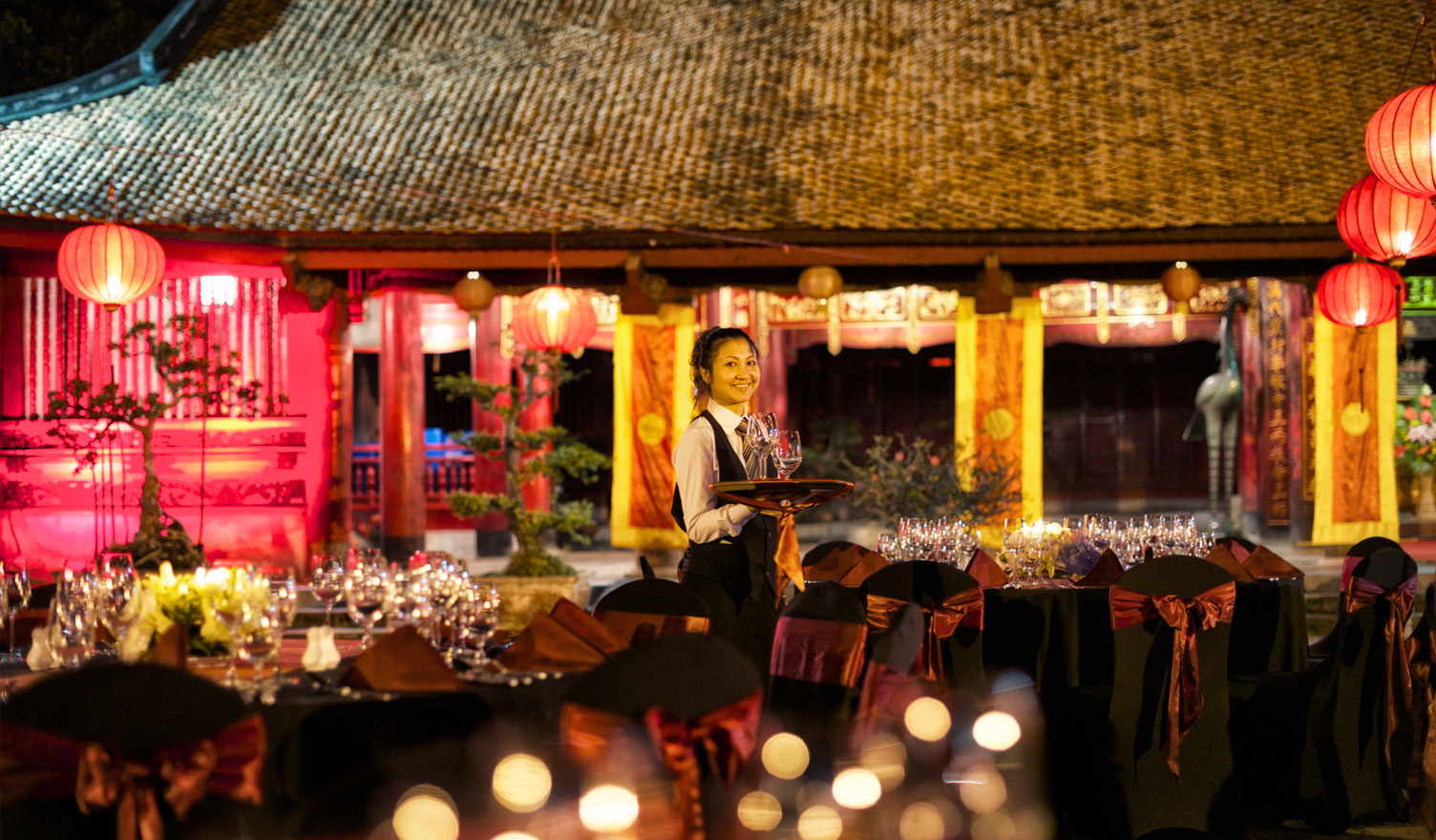
ATMOSPHERE
SPIRITUAL, BUDDHISIMCAPACITY
200 GUESTSWET WEATHER BACK UP
REAR SECTION OF COMPLEXRESTRICTIONS
GOVERNMENT OWNED
One of the oldest sights in Hanoi is the Temple of Literature, also called Van Mieu in Vietnamese. The "temple" was founded in 1070 by Emperor Ly Thanh Tong, and is dedicated to the Chinese philosopher Confucius. Six yearslater, Vietnam's first university was founded here to teach the children of royalty and aristocracy (generally calledmandarins). In 1484, another Emperor Le Thanh Tong had stele erected in one of the courtyards to record the statistics and achievements of those who received doctorates from the university.
The school continued until Emperor Gia Long transferred its functions to the new capital at Hue in 1802.
On arrival the temple is lit in a backdrop of soft light and religious colors. Ladies in ao dai’s to escort the group up the stairs, lit by torches and candles, through to the main courtyard. Coloured lanterns light the courtyard and during the sumptuous catered dinner of traditional Vietnamese cuisine, guests are entertained by music and dance performances with arrangements from the North, South and Central Vietnamese provinces.
The short walk to the dining venue (50 metres) is draped with huge colourful festival flags and torches. The setting isquintessentially Vietnamese, historical, exclusive and distinctly beautiful. A festive atmosphere pervades these historical buildings with a local community proudly showcasing the heritage and traditions passed on to them from centuries past.


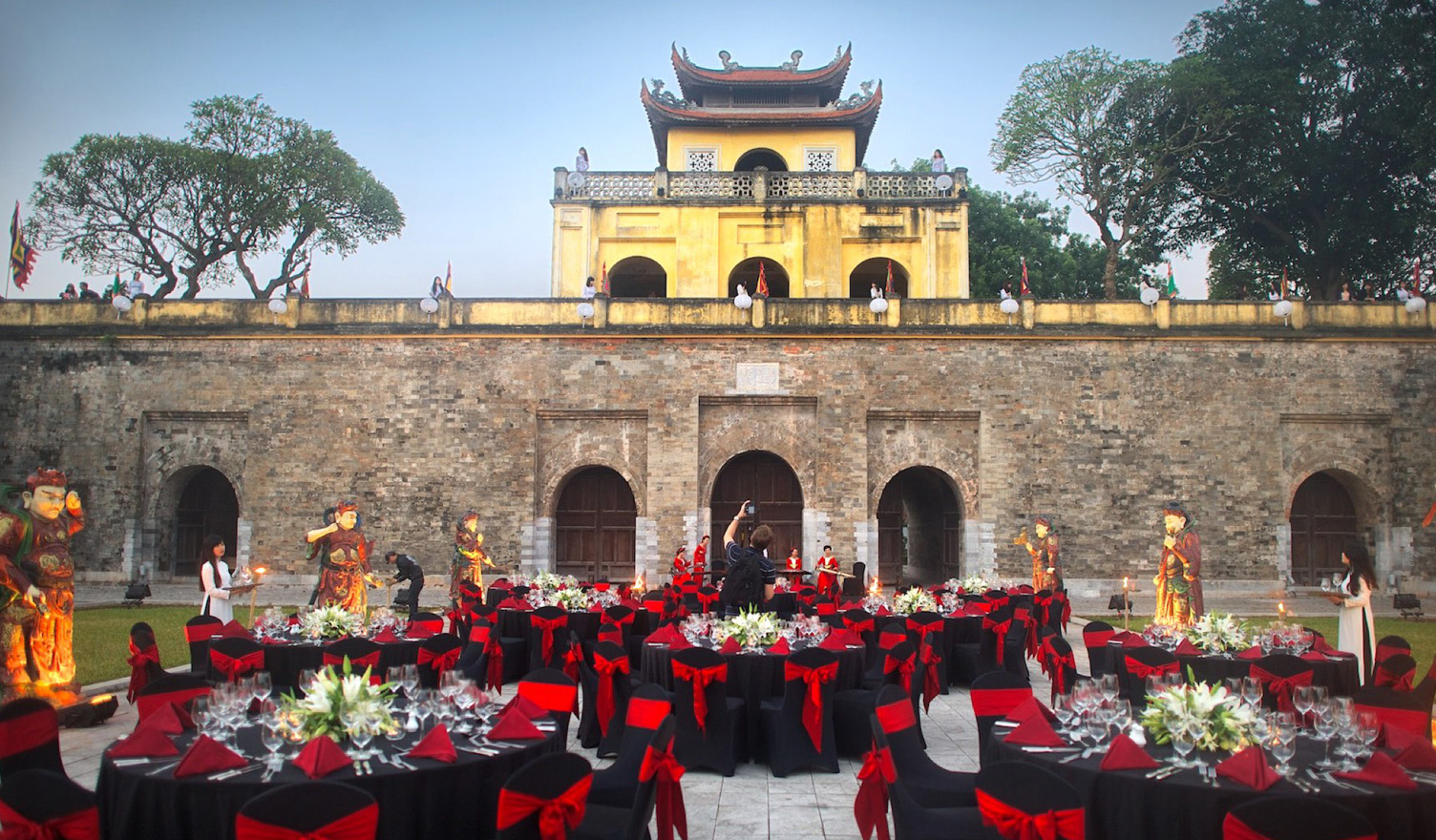
ATMOSPHERE
HISTORICAL, VIETNAMESE CULTURALCAPACITY
300 GUESTSWET WEATHER BACK UP
MARQUEE SET UPRESTRICTIONS
GOVERNMENT OWNED WITH PERMISSION GRANTED ONLY ON OCCASION
The Imperial Citadel of Thang Long was constructed earliest by the Ly dynasty in 1010 and remained the seat of the Vietnamese court until 1810, when Hue became the capital city. The royal palaces and other various structures were largely destroyed by the colonial French in the late 19th century. Some structures remain such as Doan Mon gate and the Flag Tower of Hanoi, as well as the steps of Kinh Thiên Palace and the Hậu Lâu (Princess' Palace).
The Vietnamese military command under General Giap, had its headquarters in the citadel in the building known as D67. An underground tunnel enabled the military to flee to other parts in case of a raid. It remained under military command until 2010 when it was inscribed as a World Heritage site and is now open to the public as ongoing archeological digs occur.
The courtyard facing the Doan Mon gate is wide and extensive and provides the ideal space for a large group to dine within the gates and its walls. The size and the space of the venue allows for a range of entertainment and visual options, although the setting lends itself far more to traditional and cultural performances

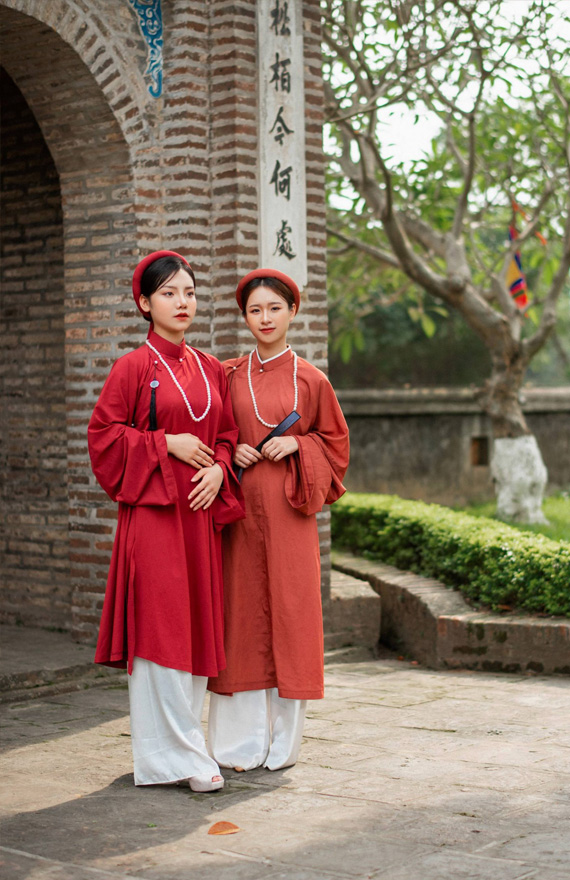
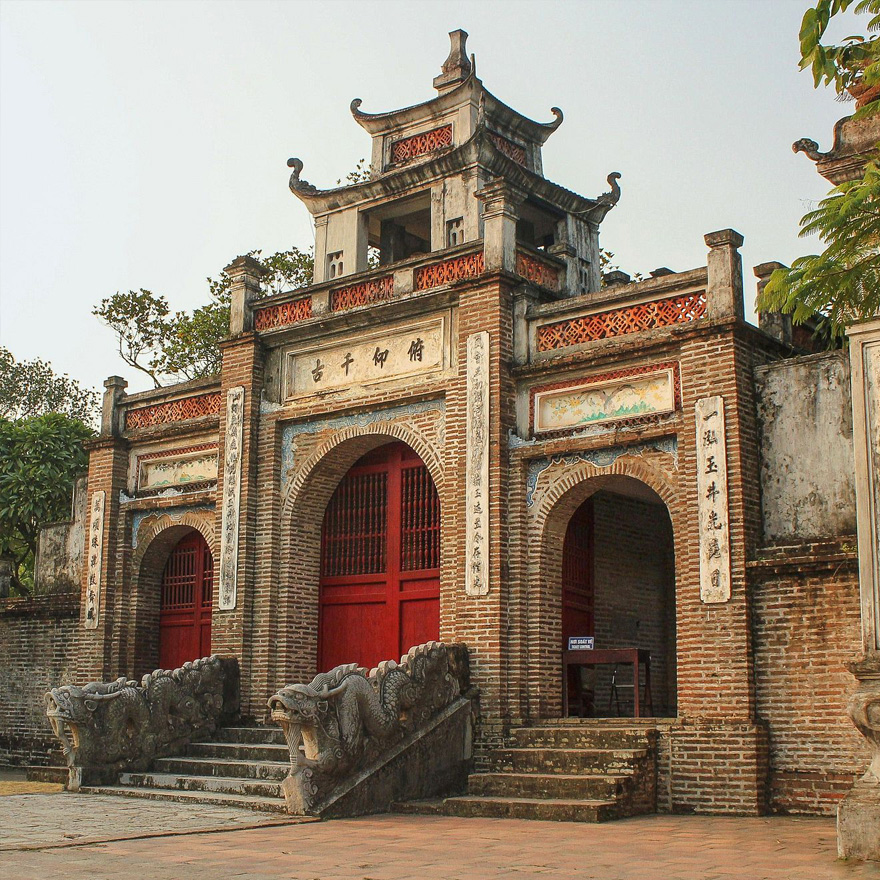
ATMOSPHERE
SPIRITUAL, BUDDHISIM, REGALCAPACITY
120 GUESTSWET WEATHER BACK UP
MARQUEE SET UPRESTRICTIONS
HERITAGE PROTECTED
Described as the largest ancient citadel in Vietnam, Co Loa historical relic covers about 500 ha in the countryside of outer Hanoi, located 17kms from the centre. The Co Loa relic complex now houses many historical, architectural and art relics like the upper shrine dedicated to King An Duong Vuong, where private events can take place.
Revered and respected as a cultural sight of great importance and relevance to Vietnamese history, Co Loa was the location of Hanoi’s first off site international corporate event created by Asia Concierge’s founder, Paul Levrier in 2000.
With its village like setting and exquisite architecture, the space can be beautifully transformed into a microcosm of Vietnam’s rich cultural past.
Waiting staff and personnel wear the old, traditional style ‘ao dai’ popular during French times, with a parade of models walking through the centre of the upper shrine courtyard surrounded by incense and festival flags.
Performances by the Hanoi Conservatory of Music and Dance further enhance the ‘past brought to life’ atmosphere of the event together with a Vietnamese banquet fit for kings and emperors.
